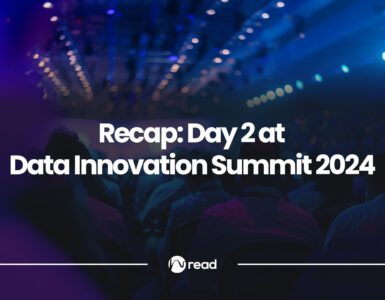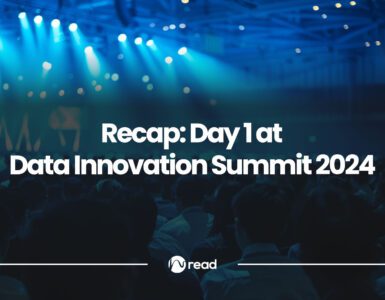In the fast-paced world of data and analytics, where every decision counts and every insight shapes the trajectory of a company, the way we measure success becomes paramount.
Recently, I had the opportunity to convene with 18 Chief Data Officers and other senior leaders in data and analytics from various sectors, such as IT, finance, retail, manufacturing, services, and public sector across Europe. Through our discussions, several key insights emerged, shedding light on the intricacies of measurement frameworks, Key Performance Indicators (KPIs), and Objectives and Key Results (OKRs).


OKRs vs. KPIs: Aligning with Strategic Objectives
One prevailing sentiment echoed throughout our discussions was the preference for OKRs over traditional KPIs. Unlike KPIs, which often focus on output and operational metrics, OKRs are directly linked to a company’s strategic objectives. This alignment ensures that every data initiative serves a purpose in advancing the overarching goals of the organization.
However, the efficacy of OKRs versus KPIs isn’t solely determined by their conceptual differences. Instead, it hinges on the data maturity and accessibility within the organization. An illustration of how measurement should operate: akin to Google Maps. It possesses ease of use and comprehension, yet conceals all its intricacies within a black box for users. Not to mention that the difficulty with quantitative metrics lies in the absence of a narrative and the lack of streamlining. Even if qualitative insights are unavailable, at the very least, sentiment is required.
Companies with robust data capabilities may opt for a top-down approach, allowing teams to define OKRs at the organizational level and disseminated to teams. Conversely, those grappling with data accessibility may adopt a bottom-up approach, where OKRs are set based on granular insights.
Agility in Measurement: Overcoming Stagnation
In today’s dynamic business environment, agility isn’t just a buzzword—it’s a necessity. Our discussions underscored the importance of agility in measurement practices. Companies that fail to embrace agility find their KPIs stagnating, unable to adapt to evolving circumstances.
Central to fostering agility is the Project Management Office (PMO), which plays a pivotal role in delivering relevant KPIs. However, adding new KPIs is often easier than removing redundant ones—a challenge that organizations must confront to maintain focus and relevance in their measurement efforts.
Navigating the Complexity of Agile Measurement
While agile methodologies have revolutionized project management, their application in measurement practices remains nuanced. Our discussions revealed a mixed sentiment towards agile, with some likening it to a cult or overhyped phenomenon.
Measuring agile success hinges on productivity metrics, yet paradoxically, the act of measuring productivity can impede actual productivity. Striking a balance between measurement and execution is paramount, ensuring that agile practices facilitate rather than hinder progress.
Two Dimensions of Measurement: Business Success vs. Data Teams’ Success
When it comes to measurement, our discussions revealed two distinct dimensions: measuring business success and measuring data teams’ success. While the former focuses on traditional performance metrics, such as revenue and efficiency, the latter delves into data quality, adoption rates, and project milestones.
Measuring data teams’ success is best achieved through a multifaceted approach that encompasses data quality assessment, adoption metrics, and customer lifetime value. However, this endeavor is rife with challenges, particularly concerning offline and non-automated data sources.
Top-Down Impact Measurement and Data Literacy Metrics
Top-down measurement is about more than just tracking metrics—it’s about measuring impact. For data-driven organizations, this entails assessing the broader implications of their initiatives on business outcomes.
In addition to traditional KPIs and OKRs, data literacy metrics emerged as a crucial component of measurement frameworks. Metrics such as dashboard adoption, engagement at data community meetings, and the number of people trained for data literacy provide valuable insights into the organization’ data culture and proficiency.
Learning and development (L&D) metrics, while valuable, shouldn’t overshadow the primary focus on business outcomes. Likewise, stagnant KPIs devoid of challenges or obstacles are indicative of complacency and should be revisited to maintain relevance and drive continuous improvement.
The Imperative of Data Quality and Risk Monitoring
In an era defined by data abundance, ensuring data quality and mitigating risks are paramount. CEOs require two types of data metrics: those that gauge data quality, encompassing completeness and accuracy, and those that assess business implementation.
Furthermore, the alignment between data and business objectives is crucial. Data initiatives must serve a tangible purpose, whether it’s cost-cutting measures or enhancing operational efficiency. Failure to align with business objectives risks rendering measurement efforts futile.
Redefining Success: Outcome over Output
In the pursuit of measurement excellence, the ultimate goal is to measure outcomes, not just outputs. Unlike outputs, which merely signify completion, outcomes encapsulate the broader impact and value generated by data initiatives.
Why do we need a KPI if it is always green? If green, let’s change it or update the target. We don’t want to measure something that works and has no challenges. However, it does not apply to standard operations and process metrics, where green KPIs are crucial.
In conclusion, the journey towards effective measurement in data and analytics is fraught with challenges yet brimming with opportunities. By prioritizing outcome over output, embracing agility, and aligning with strategic objectives, organizations can navigate this landscape with confidence, leveraging data as a strategic asset to drive innovation and success.
About the Author:


Gabor Harsanyi is Head of Connected Data and Analytics at the Marketing and Corporate Relations (M&CR) unit in Ericsson. In this capacity, Gabor oversees the M&CR Data Strategy, the Measurement Strategy, and the CRM Strategy. Additionally, he holds a secondary role as the Marketing Data Domain Manager. Gabor possesses in-depth domain knowledge in marketing, IT, and finance.
During the Data Innovation Summit 2024, Gabor will share more on “Show me the money! – The ROI of marketing analytics”.
In a recent interview, we spoke with Gabor about the ROI of marketing analytics. For the newest insights in the world of data and AI, subscribe to Hyperight Premium. Stay ahead of the curve with exclusive content that will deepen your understanding of the evolving data landscape.














Add comment